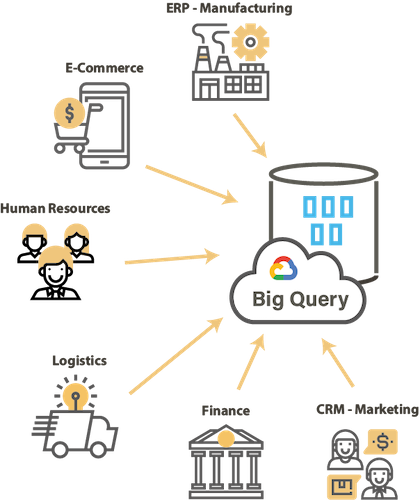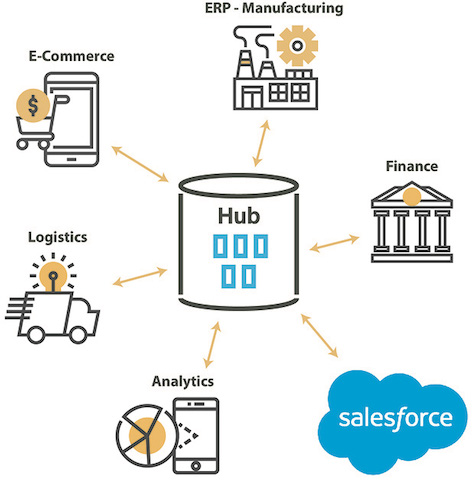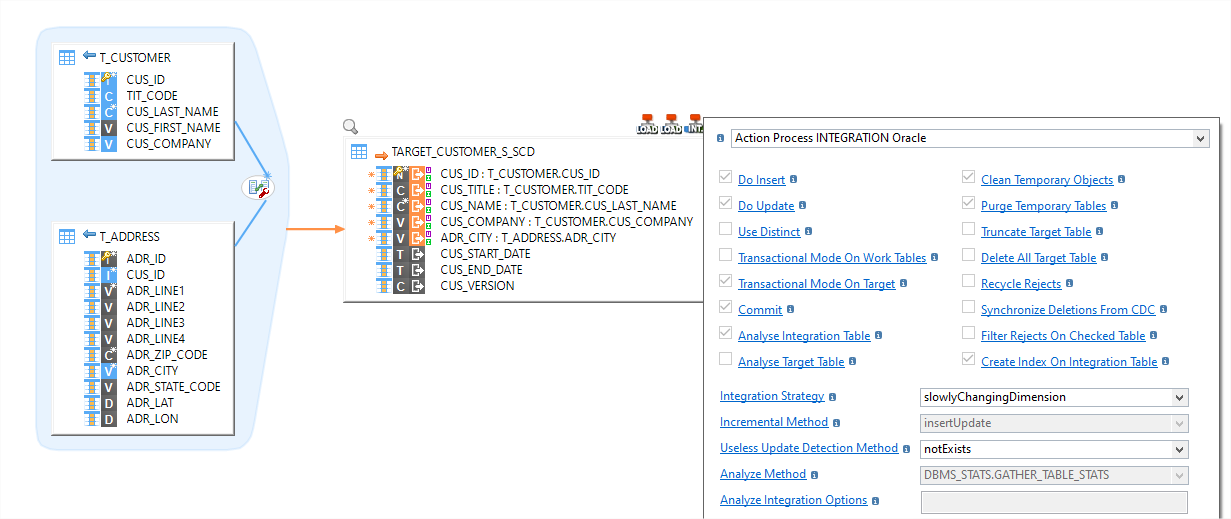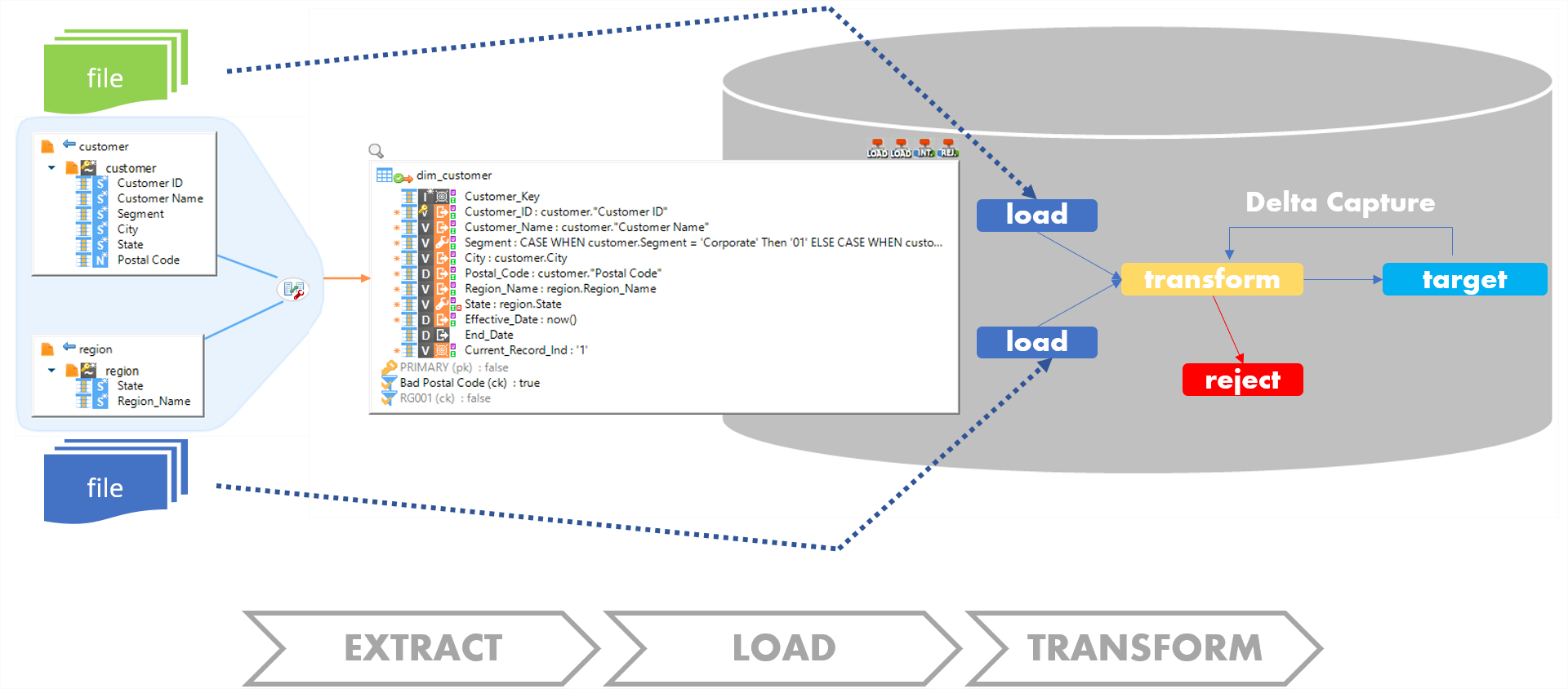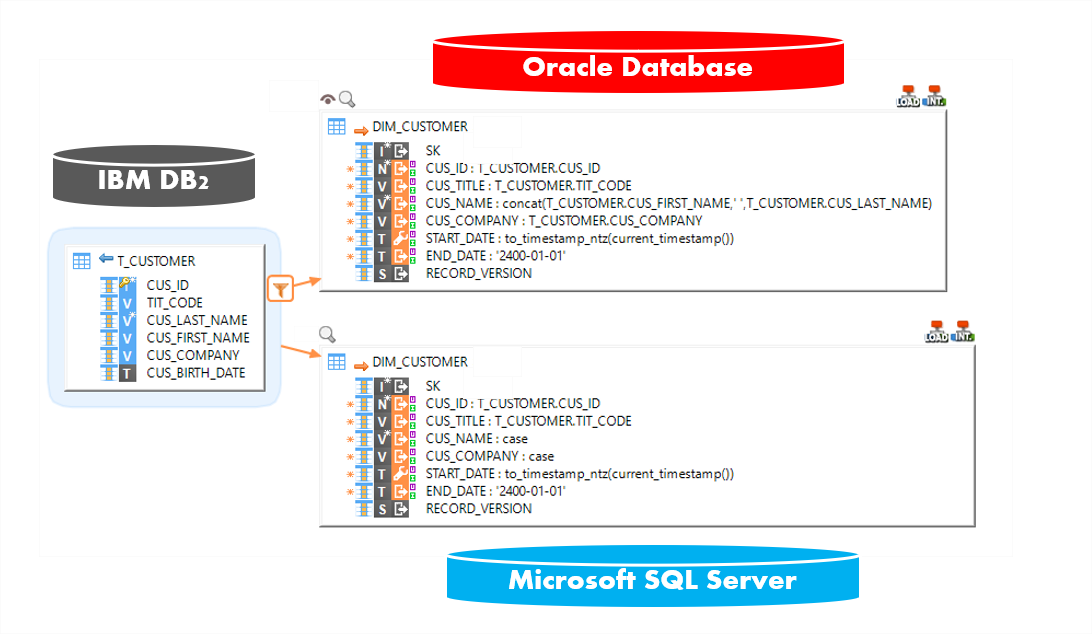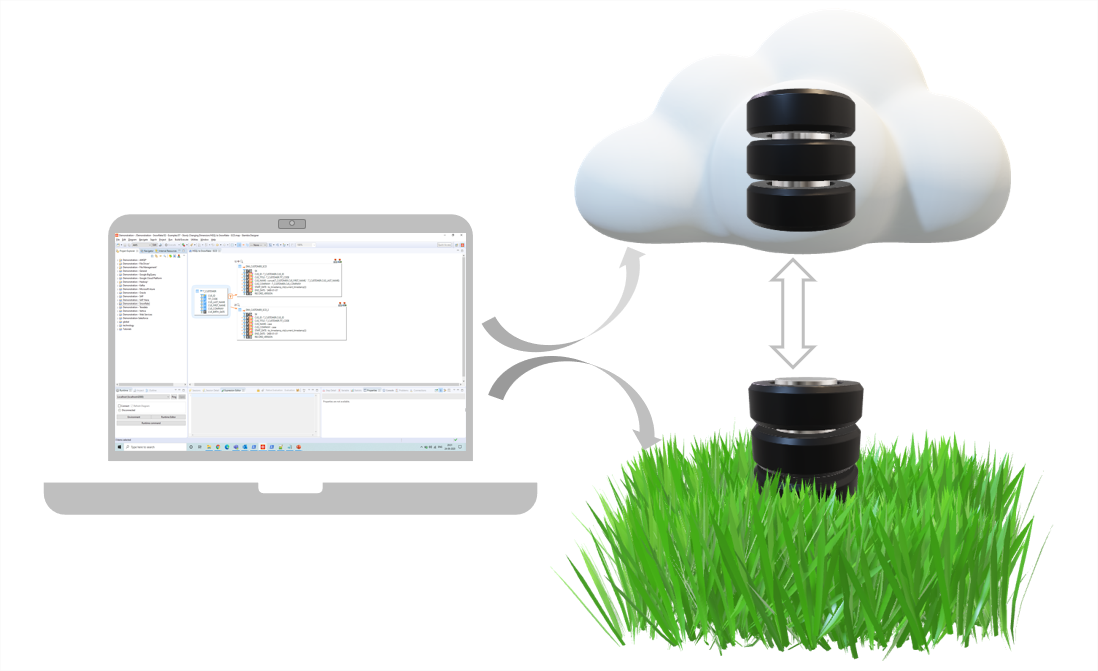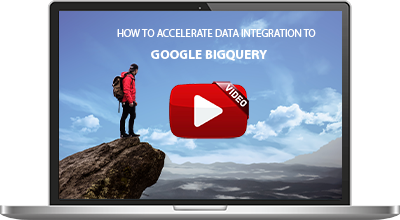 Stambia
The solution to all your data integrations needs
Stambia
The solution to all your data integrations needs

Stambia for Relational Databases
Stambia provides specific components for all types of relational databases. Using these components, you can access the databases to read and write and perform simple to complex transformations.
Stambia helps you build integration pipelines that produces native SQL scripts specific for the technologies, in a Universal Mapper.
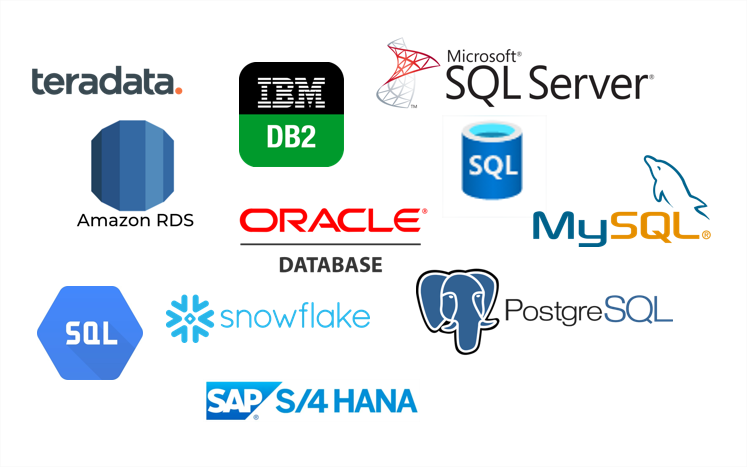
Relational Database Components: Use Cases & Requirements
Use an ELT solution to maximize performance
ETL, back in the days was required due to the inability of the database engine to perform complex transformations. Relational databases over the years have improved in many ways.
From providing more optimized features, to handling big volumes of data, to performing complex operation on these datasets.
Hence, the database engine is more capable than ever. Working with these advanced analytical RDBMS, requires invoking native loaders, import and export, copy commands etc.
With an improved and robust database engine, currently the adoption of ELT practices has improved performance and provided greater flexibility in setting up integration pipelines.
Robust native parallel processing, newer datatypes for e.g. JSON, SPATIAL, CSV etc. And many more features can be leveraged in building the integration designs.
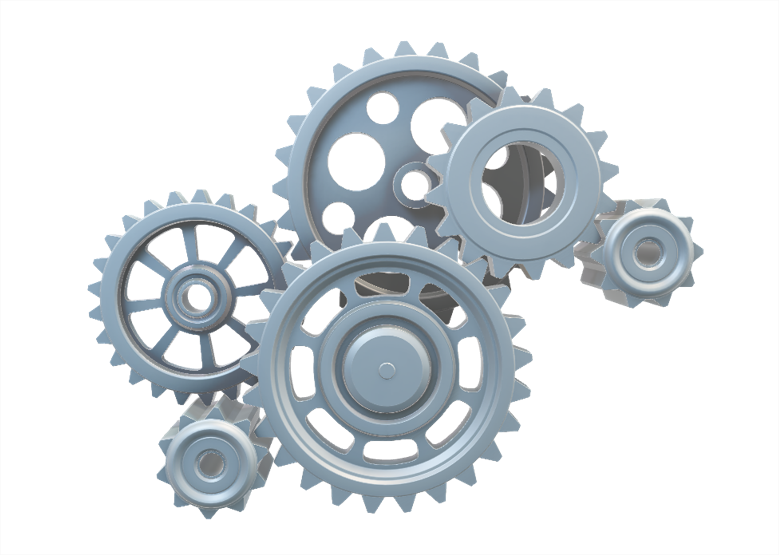
Universal and Unique approach to specific technologies

Every organization's Information system is using at least one relational database management system (RDBMS) to support their business data.
These databases could be supporting an application or could be used as a warehouse for analytics and reporting purposes. In some project, RDBMS have been used to support a unique architecture such as Data Hub.
With Information Systems using standard relational databases such as Oracle, IBM DB2, Microsoft SQL Server, MySQL, PostgreSQL etc., it is very important to cater to these database technologies in the specific way they work.
Therefore, a generic solution cannot support the complex needs. The Integration solution must provide specific components to bring the best performance.
On the other hand, provide a Universal approach of managing heterogenous technologies to keep your designs simple.
Some examples of Cloud projects made with the Stambia solution
Hybrid solution for as-a-service databases
With the advent and adoption of cloud, a lot of the relational databases are available in the marketplace.
These databases provide the same functionality with a pay-per use model.
Migrating data to these cloud databases, integrating the daily data from various source systems to on cloud database, working on a Hybrid model with databases that are on-prem or on cloud etc. becomes a norm.
In such projects it is essential to have a single solution, that is Hybrid and can cater to the various needs that are on-premise or on cloud.
On the other hand, provides a consistent way to manage your designs in a Hybrid environment, hence providing agility in your projects..

Features of Stambia Component for Relational Databases
Stambia Component for Relational Databases provides the ability to work with one or more RDBMS technologies and to access, extract, load and transform data in and out of it these databases.
These components automate a lot of manual design as the entire integration solution for database technologies is templatized.
Stambia uses JDBC as the standard way to connect to databases.
JDBC allows native access to all the databases without the need to install any connector or any database client API.
An ELT approach to employ optimized database utilities
Stambia implements the ELT principles, in order to provide the best level of performance on databases.
The E-LT Stambia Approach consists in doing the transformations on the underlying systems without adding a proprietary engine.
The transformations are made by the databases or other technologies (OLAP, Operating Systems, etc.) according to their transformation capabilities.
Stambia will use all the native components of the underlying technologies (such as the database loaders, native CDC etc.) to maximize the performance.
Dedicated Component for each technology with a Universal way of designing
Stambia provides dedicated components for each type of relational databases to cater to various forms of distinction that exists in these technologies.
These relational databases conceptually behave the same way but are distinct from each other syntactically, which means a generic solution would not be enough to fulfill the requirements.
The specific components generate native code for e.g. when using Oracle Database as a Target, you may use SQL Loader or DBLink etc.
And when having MS SQL Server as a Target you may prefer Bulk Load or BCP etc.
And with the Universal Mapper, users across different teams and projects, design in a consistent way.
Deploy your designs on any environment
With the same Components, and using the same solution, thanks to the Universal Mapper, the integration designs can be configured to connect to a relational database on cloud (DB-as-a-service).
With Stambia's Replicator templates, the data can be easily migrated to cloud. And the same mappings can be quickly configured to point to the cloud instance with a quick Metadata update.
The data integration processes then can be deployed on Stambia Runtime which is a hybrid component and can be installed anywhere.
This increase productivity and agility in your projects.
As well, optimize the overall cost to move your data to cloud due to the notion of templates and with an ELT approach you manage & optimize the transformations and computations on cloud..
Technical specifications and prerequisites
| Specifications | Description |
|---|---|
|
Protocol |
JDBC, HTTP |
|
Structured and semi-structured |
XML, JSON, Avro |
| Standard Features | From Stambia Runtime S17.5.6 |
|
Stambia Runtime Version |
Stambia DI Runtime S17.4.7 or higher |
| Non-exhautive lis of supported technologies |
RDBMS: |
Want to know more ?
Consult our resources
Did not find what you want on this page?
Check out our other resources:
Semarchy has acquired Stambia
Stambia becomes Semarchy xDI Data Integration
